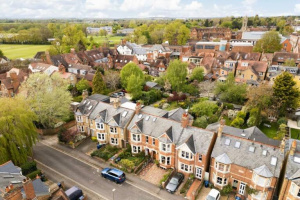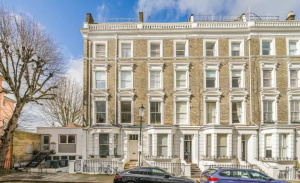Q1 2024
50,000 rental properties needed to bring supply back to pre-pandemic levels
- Average advertised rents outside of London rise to a new record of £1,291 per calendar month (pcm), though the pace of rent growth continues to slow, with average rents now 8.5% higher than last year
- London rents reach a new record by two pounds, rising to £2,633 per calendar month. Average advertised rents in the capital are now 5.3% higher than last year, with rent growth steadily slowing since the peak of 16.1% in Q3 2022
- The rental market is still extremely busy, with nearly 50,000 rental properties needed to bring the supply of rental homes back to pre-pandemic levels:
- The number of available rental properties is 11% higher than last year, but 26% below 2019
- The number of people looking for a rental home is 17% lower than last year, but 54% above 2019
- The average number of enquiries each home is getting is now 13, down from 19 at this time last year, but still nearly triple the 5 in March 2019
- The overall number of rental properties being reduced in price is at a five-year high, as more tenants hit their affordability ceiling, while the largest homes sector is seeing a record number of properties being reduced in price, dating back to 2012
Overview
The average advertised rent of new properties coming onto the market hits a 17th consecutive record, with the average price of rental properties outside of London now £1,291 per calendar month (pcm).
Average rental prices are now 8.5% higher than a year ago, however the pace of rent growth continues to slow and drops for the second quarter in a row.
Average advertised rents in London have seen a more significant slowing in rental price growth. The average rent in London rises by just two pounds to a new record of £2,633 per calendar month.
This means that average rents in the capital are now 5.3% higher than last year, with rent growth steadily slowing since the peak of 16.1% in Q3 2022
Whilst the continued slowing in the pace of rent growth will be welcomed by affordability-constrained tenants, prices are still at record levels.
Although the balance of supply and demand is slowly improving from its peak, there are still nearly 50,000 rental properties needed to head back to the pre-pandemic level of rental supply.
The latest market stats show that the number of rental properties available to tenants is 11% higher than at this time last year, though still 26% below 2019.
Similarly, the number of would-be tenants looking for a home to rent has eased by 17% compared to last year but is still 54% higher than pre-pandemic 2019.
Letting agents are still unable to meet the level of demand from tenants and are now fielding an average of 13 enquiries per rental property. Whilst this is down from 19 at this time last year, it is still nearly triple the average of five back in March 2019.
Whilst average rents are continuing to grow, there is evidence that tenant affordability is being severely tested, as reductions in rental prices are now at a five-year high for this time of year.
The proportion of rental properties that see a reduction in price now stands at 22%, up from 16% at this time last year, and the highest at this time of year since 2019 when it was 23%.
This suggests more landlords are having to reduce the advertised rent to meet the affordability of their local market.
The largest homes, top-of-the-ladder market sector, which includes four-bedroom detached houses and all five-bedroom properties and above, are the most likely to be reduced.
A third (30%) of top-of-the-ladder properties currently see a reduction in price, a new record for this time of year dating back to 2012.
Rightmove’s Director of Property Science Tim Bannister says: “The rental market is no longer at peak boiling point but it remains at a very hot simmer. Looking at data across the whole market, we can see some slow improvements for tenants with more choice, and competition with other tenants slowly starting to ease. However, tenants may not feel the benefit of some of these improvements in their local market, as the balance between supply and demand remains so far from pre-pandemic levels. The fact that even with some improvements to the level of supply, we are still nearly 50,000 properties behind the pre-pandemic market, is a stark reminder that the industry needs more good quality rental homes, and we need to encourage investment from landlords to provide them.”




